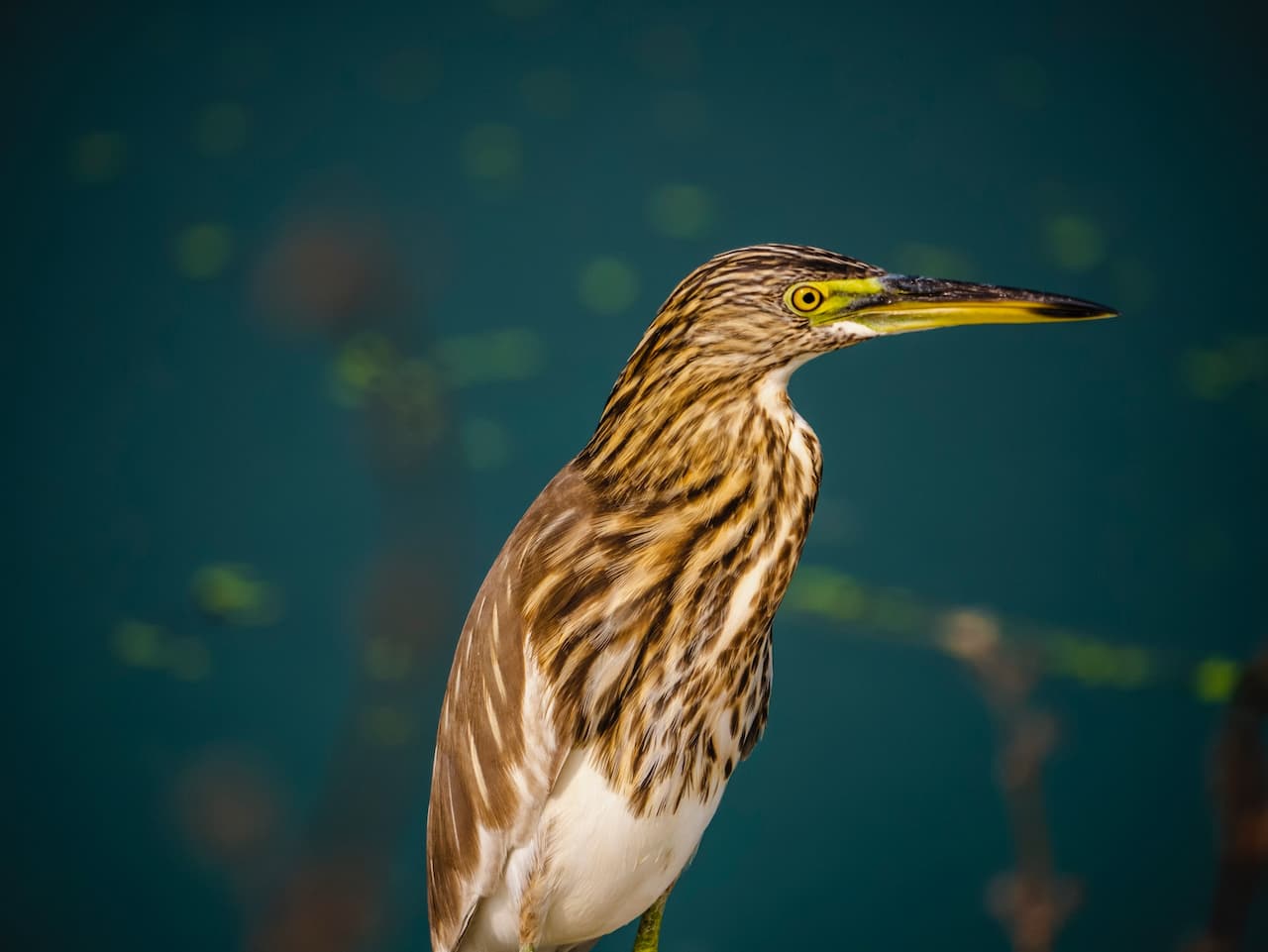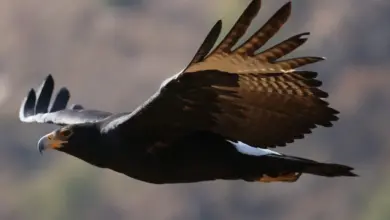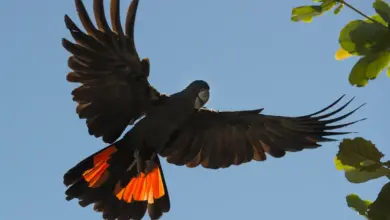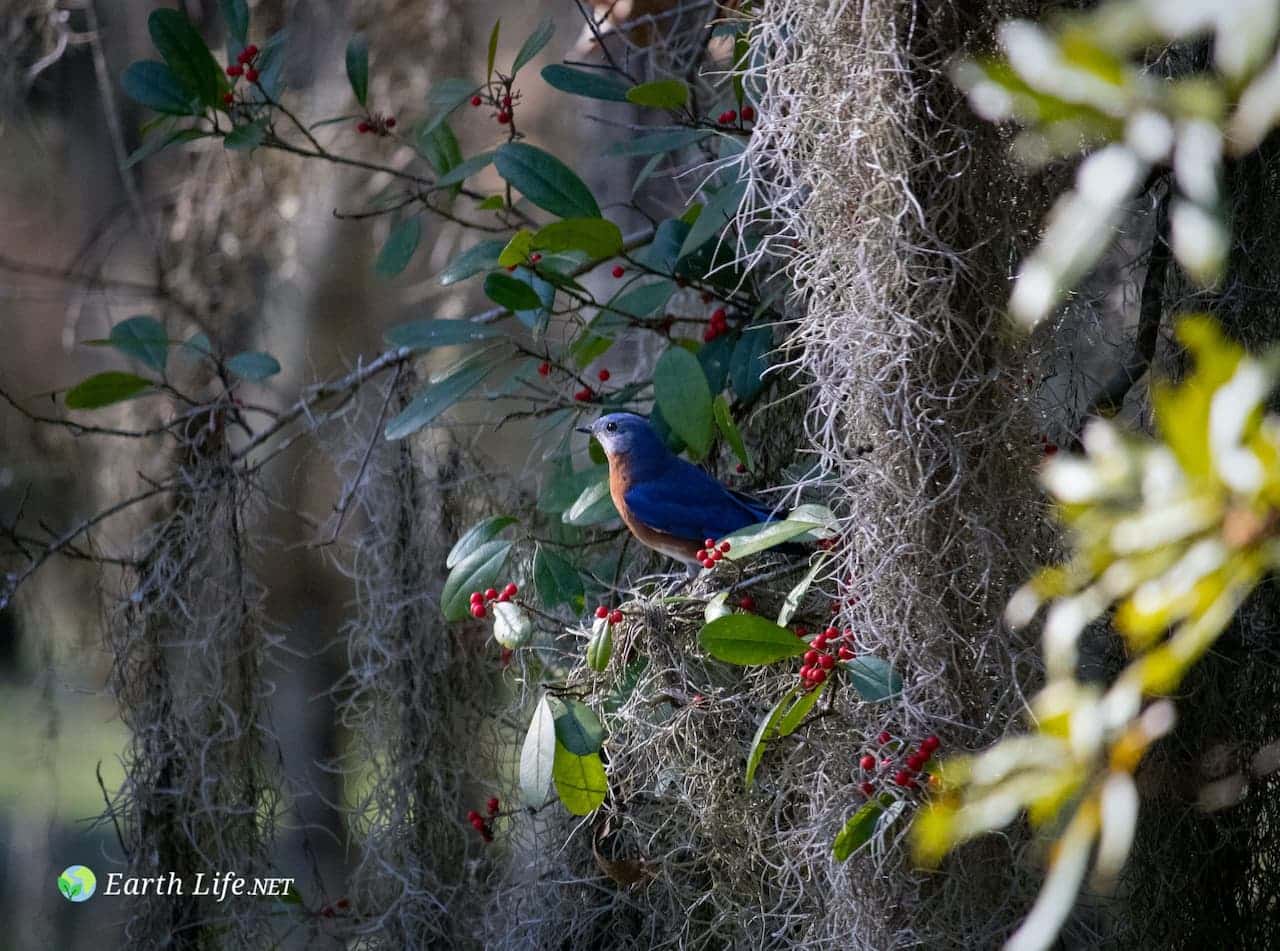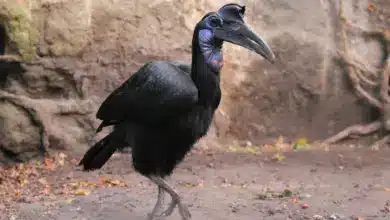The American Kestrels (Falco sparverius) is a small falcon.
This bird was (and sometimes still is) colloquially known in North America as the “Sparrow Hawk”.
This name is misleading because it implies a connection with the Eurasian Sparrowhawk Accipiter nisus, which is unrelated; the latter is an accipiter rather than a falcon. Though both are diurnal raptors, they are only distantly related.
American Kestrels are widely distributed across the Americas. Their breeding range extends from central and western Alaska across northern Canada to Nova Scotia, and south throughout North America, into central Mexico, the Baja, and the Caribbean.
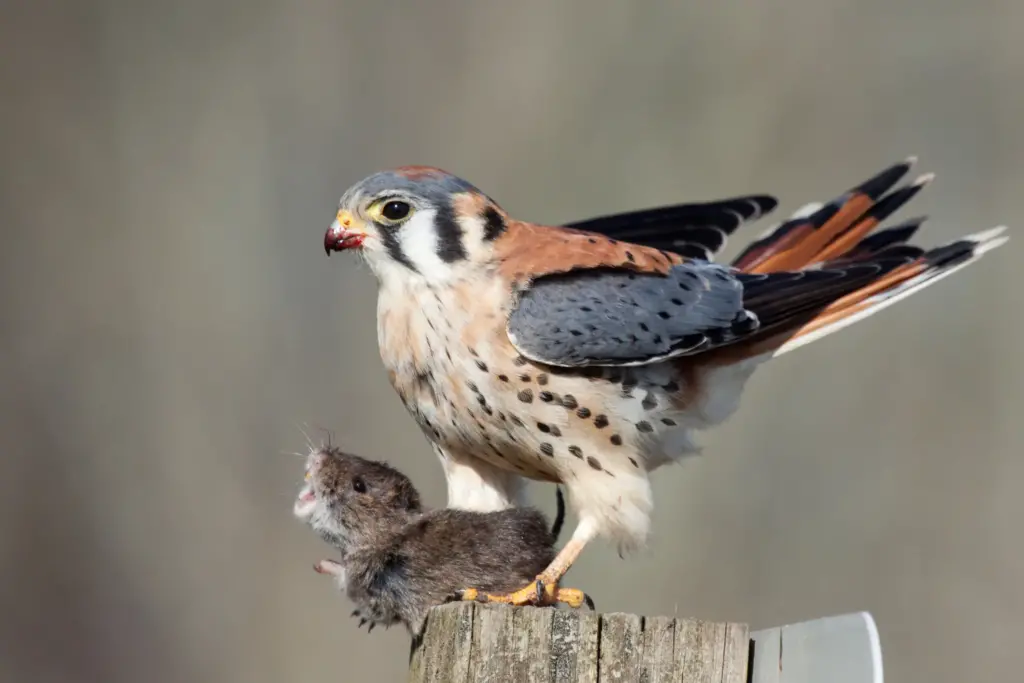
They are local breeders in Central America and are widely distributed throughout South America.
Most of the birds breeding in Canada and the northern United States migrate south in the winter, although some males stay as year-round residents. It is a very rare vagrant in Western Europe.
Habitat
American Kestrels are found in a variety of habitats including parks, suburbs, open fields, forest edges and openings, alpine zones, grasslands, marshes, open areas on mountainsides, prairies, plains, deserts with giant cacti, and freeway and highway corridors.
In addition to requiring open space for hunting, American Kestrels seem to need perches for hunting from, cavities for nesting (either natural or man-made), and a sufficient food supply.
Description
The American Kestrels (Falco sparverius) is the smallest falcon in North America – about the size of a large thrush, such as the American Robin (Turdus migratorius), on average.
The American Kestrel is sexually dimorphic, although there is some overlap within the species.
The female ranges in length from 9-11 in (23-28 cm) with a wingspan of 21-24 in (53-61 cm) and weighs an average of 4.2 oz (120 g).
The length of the male varies between 8-10 in (20-25 cm) with a wingspan ranging from 20-22 in (51-56 cm) and weighing an average of 3.9 oz (111 g).
These subtle differences are often difficult to discern in the field.
The coloration of the feathers, however, greatly varies between the sexes. The most easily recognized sexing method is the wings. The male has greyish-blue wings, while the female’s wings are rust-colored
Males have blue-grey secondary feathers on their wings, while the undersides are white with black barring. The back is rufous in coloration, with barring on the lower half.
The belly and flanks are white with black spotting. The tail is also rufous, except for the outer rectrix set, which is white with a black subterminal band.
The back of the female American Kestrel is rufous with dark brown barring. The wings exhibit similar coloration and patterning to the back.
The undersides of the females are white with rufous streaking. The tail of the female is noticeably different from the male, being rufous in color with numerous narrow dark brown or black bars. Juveniles exhibit coloration patterns similar to the adults.
Juveniles:: The tail feathers of the juvenile female lack the larger subterminal black band at the end of the tail feathers. Juveniles have a paler cere (fleshy skin above the beak) compared to adults, which is more pronounced orange.
After the first molt, these differences disappear and the young birds can no longer be distinguished from the older ones.
In both sexes, the head is white with a bluish-grey top. There are also two narrow, vertical black facial markings on each side of the head; one below the eyes and one on the rear portion of the auriculars (= (feathers covering the ears).
Two black spots (ocelli) can be found on each side of the white or orange nape. The wings are moderately long, fairly narrow, and taper to a point. While perched, the wingtips are noticeably shorter than the tailtip.
Ecology and Behavior
American Kestrels are found in a variety of habitats including parks, suburbs, open fields, forest edges and openings, alpine zones, grasslands, marshes, open areas on mountainsides, prairies, plains, deserts with giant cacti, and freeway and highway corridors.
In addition to requiring open space for hunting, American Kestrels seem to need perches for hunting from, cavities for nesting (either natural or man-made), and a sufficient food supply.
The American Kestrel is the only North American falcon to habitually hover with rapid wing beats, keeping its head motionless while scanning the ground for prey.
The kestrel commonly perches along fences and powerlines. It glides with flat wings and wingtips curved upward. It occasionally soars in circles with its tail spread and its wings flat.
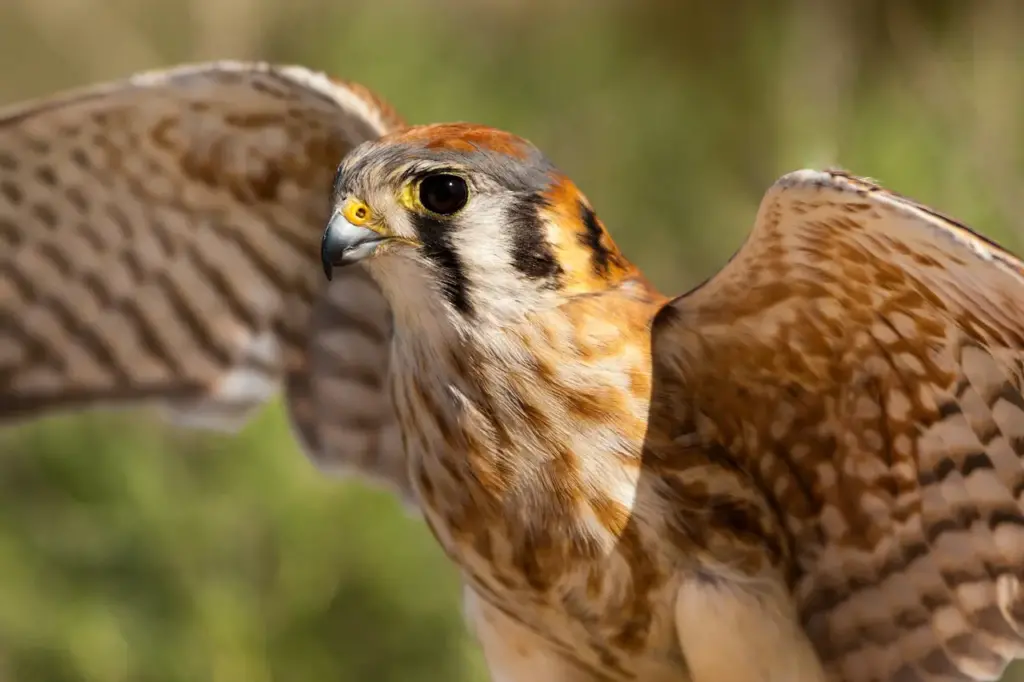
This falcon species is not long-lived. The oldest banded wild bird was 11 years and seven months old, while a captive lived 17 years. A mortality rate average of 57 percent was found. First-year mortality rates have declined since 1945 with a decrease in shootings. Major causes of death include collision with traffic, illegal shooting, and predation. The American Kestrel is a common prey item of other raptors, including buteos (e.g. Red-tailed Hawk, Buteo jamaicensis), true hawks such as the Northern Goshawk (Accipiter gentilis) or Cooper’s Hawk (Accipiter cooperii), larger falcons like the Peregrine Falcon (F. peregrinus), and diverse owls, from the Barn Owl (Tyto alba) to the Great Horned Owl (Bubo virginianus).
Nesting / Reproduction
American Kestrels form pairs in which the bond is strong, tending toward permanence. Returning migrants commonly re-establish territories held the previous year.
In one study, a pair was nested in the same tree for six consecutive years. Nesting occurs from late spring to late summer in North America, with incubation underway by the end of May; in tropical South America, the birds breed roughly from June onwards through to September or so.
Courtship begins shortly after the male establishes a territory. In early courtship, he may give the “dive display”, a series of climbs and dives 33 to 66 feet (10 to 20 m) with 3-5 “Klee” notes given near the peak of each climb. He may present the female with food during courtship feeding. He may entice her to the nest site by calling.
He may “flutter-glide” toward her with quick and shallow wing beats while carrying food and she may also beg for food by flutter-gliding.
The female initiates copulation by bowing with her tail in line with her body or slightly raised.
A cavity nester, American Kestrels will use holes in trees, rock cavities and crevices in cliffs, artificial nest boxes, or small spaces in buildings. The number of suitable breeding cavities limits this species’ breeding density. The American Kestrel has adapted well to nest boxes.
In one program, nest boxes were fixed to the backs of signs along a freeway thus allowing kestrels to breed in areas formerly devoid of nest sites. Pairs nesting in boxes on poles have much higher nesting success than pairs using boxes on trees.
No nest is built inside. In nest boxes sawdust and wood shavings may be a suitable substrate for the eggs. Males and females defend the nest against intruders, with the male maintaining a small core territory and the female defending the nest cavity directly rather than the surroundings.
Both sexes take turns incubating their eggs, a very rare situation among North American birds of prey where the female usually incubates exclusively.
Correspondingly, both sexes develop bare oval patches on each side of their breasts where the warm bare skin can contact the eggs for warming.
There are from three to seven eggs per clutch, but four to six are average; hatch 29 to 31 days after being laid. The eggs are typically short and elliptical in shape, and are white or pinkish-white with an even covering of fine spots and flecks of brown shades, occasionally concentrating as a ring or a cap.
The young grow very quickly, becoming noisy between days 11 and 14 and assuming adult weight in about 2.5 weeks. The young fledge in 30 to 31 days. Early fledgling behavior varies.
Broods typically stay together for a week or two. Some broods remain close to the nest area for a week or two while others travel throughout the parents’ home range.
Young do not disperse (permanently moving more than 0.6 miles (one km) away from the nest area) until 23 to 26 days after fledging. Young disperse as hunting skills develop.
Occasionally groups of older juveniles from various broods join together into flocks.
The American Kestrel can raise two broods per year, notably in areas with abundant small mammals e.g. in the southern United States. Replacement clutches can be laid.
Food and Feeding
In summer, kestrels feed largely on grasshoppers, dragonflies, lizards, mice, and voles. They will also eat other small birds. Wintering birds feed primarily on rodents and birds.
However, due to its diminutive size even in open cerrado habitats, mixed-species feeding flocks will hardly consider it a threat.
The birds characteristically hunt along roadsides from telephone wires, fence posts, trees, or other convenient perches when not flying in search of food. When they are flying and looking for food they frequently hover with rapid wingbeats.
Because it feeds on both insects and vertebrates, the American Kestrel maintains fairly high population densities. It has a small breeding home range, from 1.75 square miles (4.5 km2) to 2 square miles (5.2 km2).
Territory size has been estimated at 269 acres (1.1 km2) to 321 acres (1.3 km2) with much larger wintering home ranges.
Several hunting techniques are used by the American Kestrel. It will hover over one spot – when prey is sighted the kestrel will partly fold its wings and drop lower once or several times before striking.
When the prey disappears the falcon will glide in a semicircle before turning back into the wind to hover again. It will also soar in circles, or figure eights, using the same stooping tactics as when hovering.
The kestrel commonly hunts from elevated perch sites, waiting for prey to move on the ground. The kestrel bobs its head and pumps its tail just before attacking.
Other prey capture techniques include direct pursuit, landing and flushing prey from the ground (especially grasshoppers) and then taking them in flight, capturing flying insects from an elevated perch, and nest robbing including the burrows of Bank Swallows and the nests of Cliff Swallows.
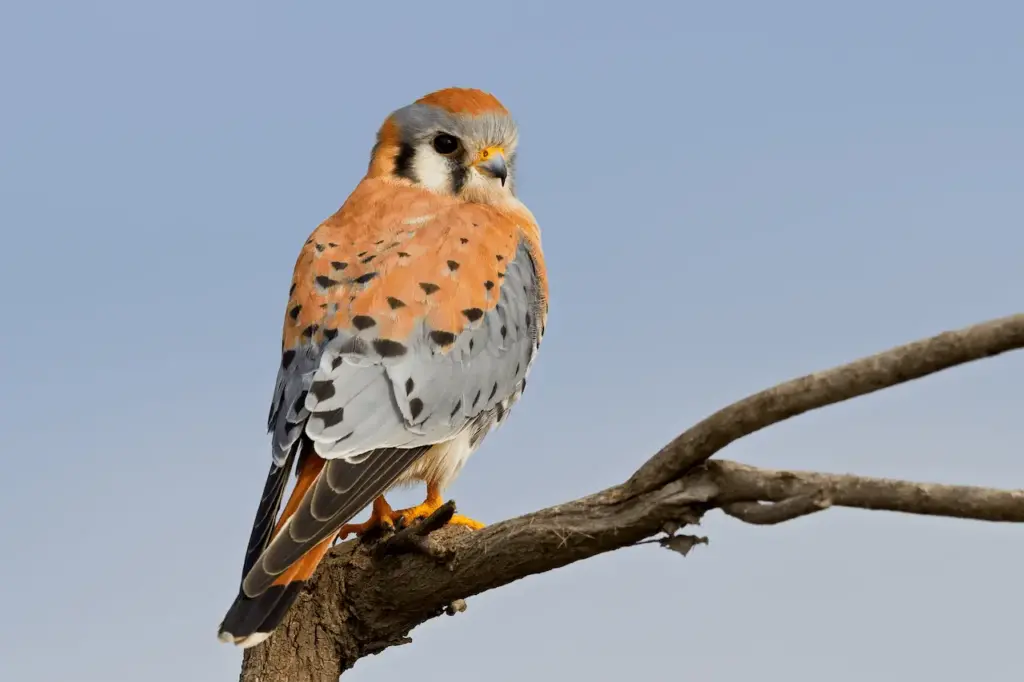
It is also an occasional bat catcher, taking bats from their tree roosts, or striking bats in flight from above or as the bats leave or enter caves. The kestrel will kill and cache food items.
The American Kestrel occasionally robs others of the same species. It has also been known to rob a shrike of its prey. Kestrels sometimes harass other hawks, and even Golden Eagles, in flight.
Voice / Vocalizations
The American Kestrel has three basic vocalizations – the “Klee” or “killy”, the “whine”, and the “chitter.” The “Klee” or “Killy” is usually delivered as a rapid series – killy, killy, killy, killy when the kestrel is upset or excited. It is used at the apex of the dive display, during fights with other kestrels, and after unsuccessful hunting attempts.
The “whine” may last as long as one to two minutes and may be single or treble. The more intense the situation, the more likely the “whine” will move toward the treble extreme. “Whines” are given during courtship feeding and copulation. The treble whine is heard from breeding females and fledged hungry young.
The “chitter” is the most frequent vocalization in male-female interactions. Its volume and duration depend upon the stress or excitement of the situation. It is associated with friendly approaches and bodily contact between the sexes during the breeding season. Occasionally a “chitter” follows a “whine.”
Calling occurs throughout the day. Nestlings at two weeks can produce all three vocalizations. Female kestrels tend to have slightly lower-pitched and harsher voices than males.
Status and Conservation
As this bird occurs over a wide range and is not generally rare, the IUCN classifies it as a Species of Least Concern.
Local populations may fluctuate according to resource availability, and birds may become locally extinct if their habitat deteriorates.
The American Kestrel’s North American population has been estimated at 1.2 million pairs, with the Central and South American populations being as large.
It is possible that the clearing of parts of North America for agriculture in the last two hundred years has caused the American kestrel population to increase.
The southeastern race, Falco sparverius paulus, is in serious decline (an 82 percent decrease since the early 1940s in north central Florida) possibly due to habitat loss and loss of nest sites, and has been listed in Florida as “threatened”.
Threats to the species as a whole include loss of nest sites, pesticide poisoning (dieldrin and DDT, among others), and death through collisions with vehicles as well as shooting.
Use in Falconry
American Kestrels (along with the Red-tailed Hawk) are one of two raptors almost universally used by new (apprentice) falconers in the United States. This is largely due to federal laws restricting apprentices to possession of the following raptors:
“which must be taken from the wild: an American kestrel (Falco sparverius), a red-tailed hawk (Buteo jamaicensis), a red-shouldered hawk (Buteo lineatus), or, in Alaska only, a goshawk (Accipiter gentilis).”
The American Kestrel is generally considered to be a harder bird to care for due to its small size, quick metabolism, and fragile nature (in comparison with the much larger Red-tail and other raptors used in falconry) and requires extensive weight management, often within a couple of tenths of a gram.
Falconers typically use American Kestrels to hunt non-game species: insects, sparrows (typically the invasive European variety), starlings, and grackles.
Male American Kestrels, due to their smaller size, are best suited for sparrows and starlings – though particularly skilled and competent males may occasionally tackle grackles.
The larger females are slightly less agile than the males but can take larger prey. Females generally are slightly less successful in taking sparrows in comparison to males but are more capable of taking starlings, grackles, and a variety of other small birds.
A few females have even been known to take doves, though this is a very rare occurrence.
Hunting Kestrels are at risk of predation by cats, dogs, and other raptors, in particular Cooper’s Hawk (Accipiter cooperii).
Behaviorally, kestrels generally tame down relatively quickly (1–3 weeks) and to a great degree – especially in comparison to other raptors. This tameness helps considerably in day-to-day care, as Kestrels used in falconry should be kept indoors in order to better control weight and protect the bird from predation.
The downside of this tameness is the American Kestrel’s penchant to begin “screaming” (food begging) – incessant, piercing, loud calls – whenever the falconer appears.
The mortality rate for American Kestrels kept by falconers is estimated to be 7.4% per year, whereas mortality rates for wild kestrels can be well over 65% per year.
Most falconers eventually release their kestrels back into the wild once they are of breeding age.
There are so few falconers in the United States (estimated at less than 4,000) that any contribution to the estimated millions of wild American kestrels in the United States would be statistically insignificant.
Systematics
This bird is apparently not a true kestrel. mtDNA cytochrome b sequence analysis (Groombridge et al. 2002) indicates a Late Miocene split between the ancestors of the American Kestrel and those of the Common Kestrel and its closest relatives.
The color pattern with its large areas of brown is reminiscent of kestrels, but the coloration of the head – notably the black ear patch, which is not found in any of the true kestrels – and the male’s extensively gray wings are suggestive of a closer relationship with the hobbies, an informal grouping of falcons of usually average size.
Species such as the Merlin and the Aplomado Falcon are proposed as possible close relatives. Indeed, the Merlin is a highly polymorphic bird and although its grey tail and back are distinctive, certain morphs are the only birds that might conceivably be confused with American Kestrels.
Conclusive evidence is lacking, and what can be said at present judging from the fairly noninclusive DNA sequence studies is that the general relationships of the present species seem to lie with a number of rather basal “hobby” lineages, such as the Merlin and Aplomado Falcon mentioned already, or the Red-footed and Amur Falcons – or even the Peregrine Falcon lineage with its large species.
The American Kestrel is not very closely related to any of these groups, although it might be closer to the Aplomado Falcon (and its presumed close relatives, the Bat, and Orange-breasted Falcons) than to any other living species – an association that is also better supported by biogeography than a close relationship with the exclusively Old World true kestrels.
It is nonetheless highly distinct in morphology from any of these and, interestingly, has a syrinx similar to the Peregrine and the hierofalcons.
In conclusion, until better evidence is available, it is best-considered part of a radiation of falcon lineages that diversified around the North Atlantic at the end of the Miocene.
Though several fossils of small falcons are known from North America at roughly the correct time, the earliest testimony of the American Kestrel lineage is Pleistocene remains of the living species

